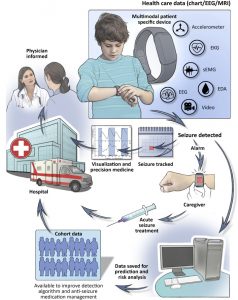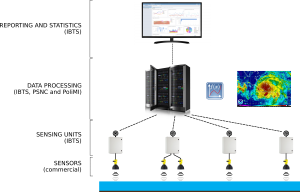Imagine: in 2017, the most powerful supercomputer in the world, the Sunway TaihuLight installed at the NRPCPC in China, could compute 93 quadrillions operations on real numbers in only 1 second. This is 10.000 times more than what normal computers can do in the same amount of time.
By 2023, these very powerful computers, knowns as High Performance Computers (HPC), should be able to compute 1018 operations per second – or Exascale.
HPC are employed in many fields: in oil & gas for oil field discovery; in finance for forecasting market trends; in chemistry for designing new materials, drugs, and fuels; in engineering for fluid dynamics, (applied in many sectors, from aerospace to heating and cooling) and for structural analysis; in metereology for weather, forecasting; in security for brute force attacks on cryptosystems; in physics for modeling fundamental principles, of matter and energy; and in emerging application domains such as business intelligence, deep learning, and data analytics.
This is why the High-Performance Computing market is developing so quickly, and the RECIPE project is so important: it is essential to develop a software that is between the hardware and the applications and that is able to make the system reliable despite the increasing number of resources and the increasing time between failures.
To manage this complexity, the EU Horizon 2020 project RECIPE will provide in particular:
- A way to optimise energy efficiency: a hierarchical runtime resource management infrastructure
- A methodology that ensures the Quality of Service in face of hardware failures: a predictive reliability methodology
- A set of integration layers to allow the resource manager to interact with both the application and the underlying deeply heterogeneous architecture.
RECIPE’s impact on people’s lives
Geophysical exploration. Thanks to the efficient implementation of the runtime manager, it is possible to get very high-resolution 3D models of subsurfaces even at very deep levels without using too much energy. This will reduce the uncertainty of current seismic exploration surveys. The tool here will be the Full Waveform Inversion tool.
Environmental monitoring and meteorology. Because of climate change, by 2050 the number of flood events is expected to double, with devastating effects on our ability to intervene and on our economy. Flood events are in fact the most frequent and the most expensive manifestations of hydro-geological instability.
The project will develop techniques to keep the status of water basis under control (via a set of on-field platforms and a dashboard application). The long-term goal is not only to monitor the status of rivers and canals, but also to improve the reaction speed to critical conditions, such as floods, by exploiting weather forecasts. Interestingly, the data coming from the on-field sensors (water level, humidity, speed and direction of wind, etc.) can also be used to enhance the precision of weather predictions themselves, thus creating a very useful synergy.
Within the project, HPC is also used to predict the energy produced by renewable energy sources. For the existing wind turbines, the simulation provides a more detailed weather forecast to maximize the outcome of the power plant. It can also help in finding the most optimal localization of the wind turbines to maximize benefit from local topography and weather conditions.
Bio-medical machine learning and big data analytics. The software infrastructure developed within the project will allow researchers to detect epileptic seizures in real-time in many people, thus potentially saving many lives.

Epileptic seizures, in fact, induce a number of autonomic system changes that can be monitored via wearable electronics. However, the huge variation in seizures from one patient to another makes their detection very challenging.
These biomedical traces obtained via a monitoring system are then labelled as potential seizures, and they are sent to computing infrastructures with enough computational power to execute the required operations needed to detect whether they seem to correspond to an upcoming epileptic seizure or not.



